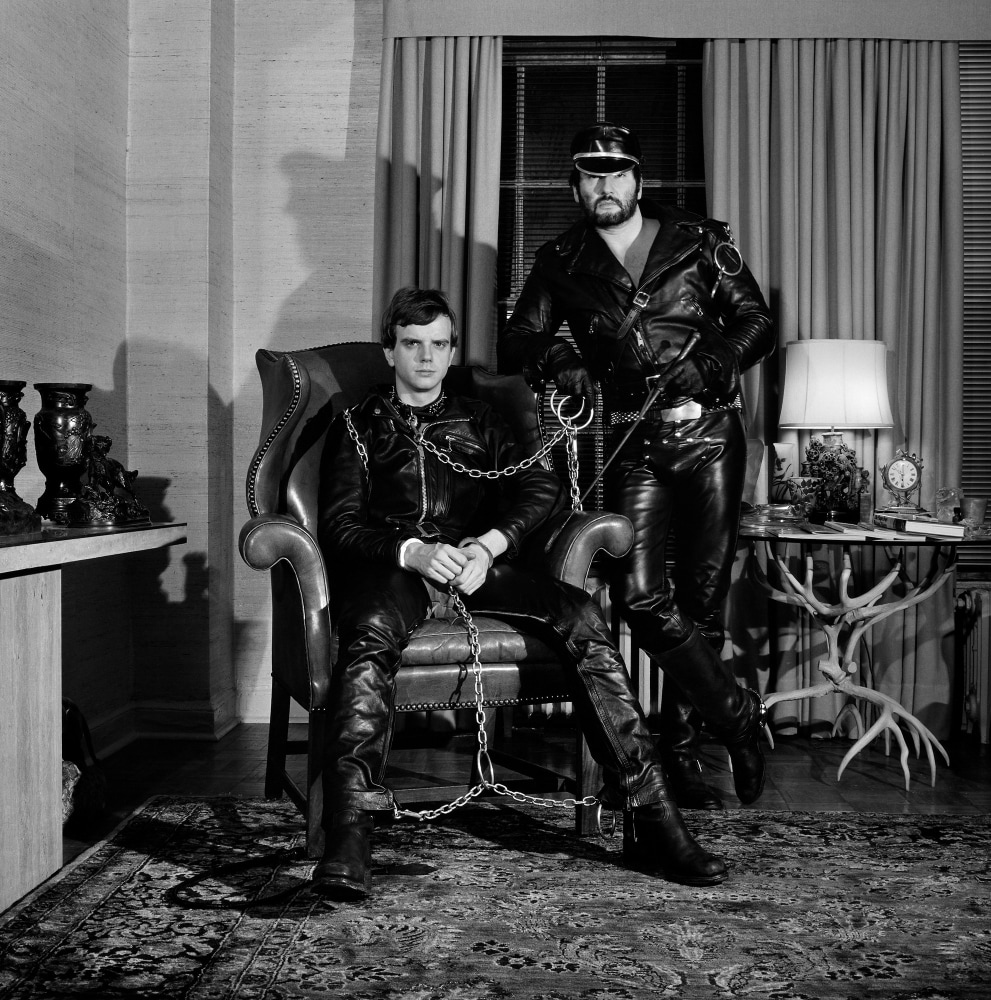
Brian Ridley and Lyle Heeter, 1979
Details, Details: Robert Mapplethorpe's Brian Ridley and Lyle Heeter 1979
Power and role play in Mapplethorpe’s double portrait
Two men pose for a photograph in their living room. The room is tastefully decorated with a select number of antiques and curtains that hang to the floor, forming a backdrop for a glass table top that balances on stag antlers. The couple are in costume; kitted out in full leather, they are dressed as real men. The younger of the two sits in an armchair; he plays The Slave. The chains that shackle him are controlled by his partner, whose boots rest firmly on an oriental carpet – the kind you buy from a specialist dealer – and who is also holding a crop that rests on the armchair. He is playing The Master. Together, they have rehearsed the gestures and motivations of their specific roles. They have collaboratively demarcated a safe space, having outlined their limits and agreed on a safe word.
In sitting for the picture, they have invited Mapplethorpe to join their game. He plays The Photographer, and his task is to frame their private role play and make it public. They adopt an air of relaxed formality in a similar manner to that which may be assumed by a certain type of family when posing for the annual portrait they send out to friends at Christmas. Like these domestic stagings, the two men are engaged in an act of exhibitionism. Yet here, the sitters are playfully aware of all the oppression and subservience involved in performing normative roles behind closed doors.
The resulting image implies a fourth participant: The Viewer. A new safe space is being attempted, but this time in public.
Brian Ridley and Lyle Heeter is part of the ARTIST ROOMS collection acquired jointly by Tate with the National Galleries of Scotland through The d’Offay Donation with assistance from the National Heritage Memorial Fund and the Art Fund in 2008.